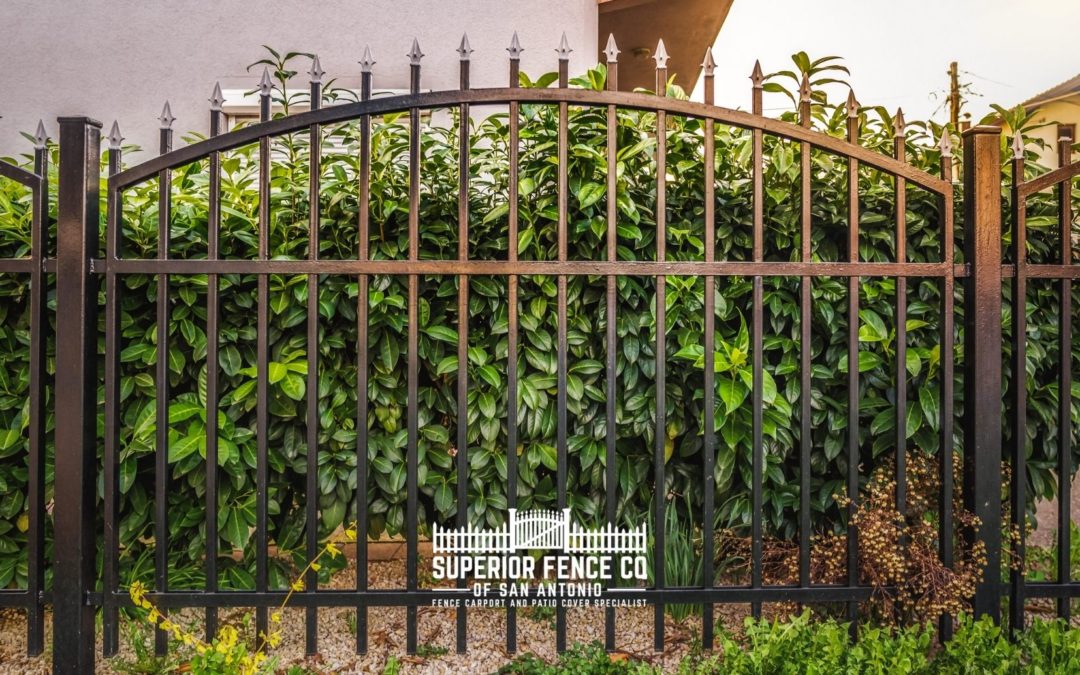All Categories
Featured
Fences are an important component of your property, offering security, personal privacy, and a clear limit. Like any type of outside framework, fencings experience wear and tear over time due to direct exposure to the components, age, and general use. When a fence requires replacing can conserve you from costly repairs down the roadway and protect against possible safety dangers, recognizing. Below are a number of signs that might indicate it's time to replace your fence.
With time, fencings can sustain damages from tornados, dropped trees, or accidents. While minor damage like little dents or missing nails can be taken care of with a basic repair, comprehensive damages such as big splits, splits, or areas that are broken beyond dealing with may suggest it's time to replace the whole fencing. A brand-new fencing may be the far better financial investment. if you've already attempted several repair services and the damage maintains reoccuring.
![]()
Bugs and bugs like termites, woodworker ants, and rats can trigger substantial damages to wood fencings. If the infestation has spread, replacing the fence might be the only choice to ensure your residential property is secure.
![]()
The fence blog posts are the structure of your fencing, sustaining its whole framework. If the posts become loosened, unpredictable, or begin to move in the ground, the fencing's stamina and safety will certainly be jeopardized. In some circumstances, individual articles can be replaced, but if several articles are unsteady or leaning, replacing the whole fencing may be a lot more useful. A sagging or unsteady fence is not just unpleasant yet additionally a security threat.
Fencings can last anywhere from 10 to thirty years, depending on the products used. Even the sturdiest fence will eventually show indicators of wear and damage. If your fence is older and showing substantial signs of aging-- such as discolored paint, severe weathering, or chronic repairs-- it might be much more cost-efficient to replace it instead of remaining to patch it up. An older fencing additionally may not meet present building ordinance or safety and security criteria, especially in areas where regulations have actually altered over time.
If a section of your wood fencing is soft to the touch, blemished, or has a stuffy scent, it can be an indication that rot has established in. In some cases, a couple of slabs or sections can be replaced, however if the rot is widespread, it's typically far better to replace the entire fence.
If your fence continuously needs maintenance-- whether that's staining, changing private slats, or tightening up bolts-- maybe an indication that the fence is nearing the end of its life. Constant repair work are not only taxing yet likewise pricey. If you find yourself often preserving a fence that no more looks or functions as it should, it might be time for a full substitute. A brand-new fence can supply you with comfort and decrease lasting upkeep costs.
Throughout the years, fences can begin to lose their aesthetic allure as a result of weathering, fading, or physical damage. A fencing that was when lively may turn gray, become distorted, or start leaning. While some aesthetic problems can be treated with a brand-new layer of paint or discolor, various other issues might be too severe to fix. If your fencing has come to be an eyesore that detracts from your residential property's curb charm, replacing it can boost the appearance of your home and raise its worth.
Possibly one of the most crucial factors to change a fence is if it has actually come to be a safety and security worry. Whether due to decomposing posts, leaning, or damaged components, a fencing that no longer does its desired function-- such as maintaining pets or children secure-- can be a responsibility.
Final Thought
Identifying when it's time to replace your fence can stop safety and security hazards, reduce ongoing fixings, and save you cash in the lengthy run. If your fence reveals signs of substantial damage, decaying, pest infestation, or age-related wear, it's time to consider a substitute.
- Damage Irreparable
With time, fencings can sustain damages from tornados, dropped trees, or accidents. While minor damage like little dents or missing nails can be taken care of with a basic repair, comprehensive damages such as big splits, splits, or areas that are broken beyond dealing with may suggest it's time to replace the whole fencing. A brand-new fencing may be the far better financial investment. if you've already attempted several repair services and the damage maintains reoccuring.
- Bug Infestation

Bugs and bugs like termites, woodworker ants, and rats can trigger substantial damages to wood fencings. If the infestation has spread, replacing the fence might be the only choice to ensure your residential property is secure.
- Unstable Fencing Blog Posts

The fence blog posts are the structure of your fencing, sustaining its whole framework. If the posts become loosened, unpredictable, or begin to move in the ground, the fencing's stamina and safety will certainly be jeopardized. In some circumstances, individual articles can be replaced, but if several articles are unsteady or leaning, replacing the whole fencing may be a lot more useful. A sagging or unsteady fence is not just unpleasant yet additionally a security threat.
- Age of the Fencing
Fencings can last anywhere from 10 to thirty years, depending on the products used. Even the sturdiest fence will eventually show indicators of wear and damage. If your fence is older and showing substantial signs of aging-- such as discolored paint, severe weathering, or chronic repairs-- it might be much more cost-efficient to replace it instead of remaining to patch it up. An older fencing additionally may not meet present building ordinance or safety and security criteria, especially in areas where regulations have actually altered over time.
- Substantial Rot or Mold And Mildew Development
If a section of your wood fencing is soft to the touch, blemished, or has a stuffy scent, it can be an indication that rot has established in. In some cases, a couple of slabs or sections can be replaced, however if the rot is widespread, it's typically far better to replace the entire fence.
- Frequent Maintenance Demands
If your fence continuously needs maintenance-- whether that's staining, changing private slats, or tightening up bolts-- maybe an indication that the fence is nearing the end of its life. Constant repair work are not only taxing yet likewise pricey. If you find yourself often preserving a fence that no more looks or functions as it should, it might be time for a full substitute. A brand-new fence can supply you with comfort and decrease lasting upkeep costs.
- Visual Decline
Throughout the years, fences can begin to lose their aesthetic allure as a result of weathering, fading, or physical damage. A fencing that was when lively may turn gray, become distorted, or start leaning. While some aesthetic problems can be treated with a brand-new layer of paint or discolor, various other issues might be too severe to fix. If your fencing has come to be an eyesore that detracts from your residential property's curb charm, replacing it can boost the appearance of your home and raise its worth.
- Security Issues
Possibly one of the most crucial factors to change a fence is if it has actually come to be a safety and security worry. Whether due to decomposing posts, leaning, or damaged components, a fencing that no longer does its desired function-- such as maintaining pets or children secure-- can be a responsibility.
Final Thought
Identifying when it's time to replace your fence can stop safety and security hazards, reduce ongoing fixings, and save you cash in the lengthy run. If your fence reveals signs of substantial damage, decaying, pest infestation, or age-related wear, it's time to consider a substitute.
Latest Posts
NAPA AutoCare: Reliable Repairs Trusted by the NAPA Standard
Published Apr 19, 25
2 min read
About Us: Explore More About Montclare Auto Repair ’s Expertise & Service
Published Apr 19, 25
2 min read
Montclare Auto Repair: The Leading Auto Service Provider in Montclare
Published Apr 19, 25
2 min read
More
Latest Posts
NAPA AutoCare: Reliable Repairs Trusted by the NAPA Standard
Published Apr 19, 25
2 min read
About Us: Explore More About Montclare Auto Repair ’s Expertise & Service
Published Apr 19, 25
2 min read
Montclare Auto Repair: The Leading Auto Service Provider in Montclare
Published Apr 19, 25
2 min read